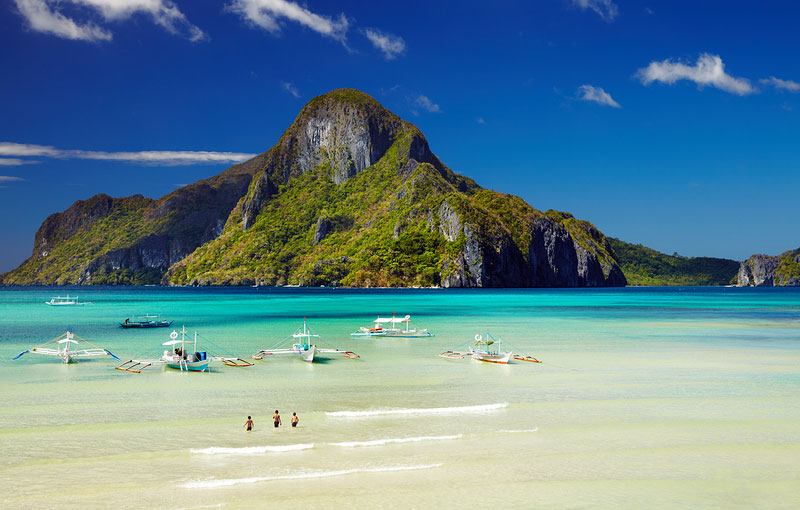
WEF in Manila pre-conference briefing (From left) Tourism Secretary Ramon Jimenez, Finance Secretary Cesar Purisima, and WEF head of Asia Sushant Palakurthi Rao (Likha Cuevas-Miel, InterAksyon.com)
WEF in MANILA | PH's 'remarkable story' draws in 600 world leaders to talk ASEAN, food security
At least 600 world leaders from 30 countries are expected to converge in Manila next week to see for themselves the 'remarkable' growth story of the Philippines during the 23rd World Economic Forum (WEF) on East Asia to thresh out top economic and developmental issues of the region.
East Asia has recorded the fastest growth in the world as the economies of developed nations still lumbered last year, with the Philippines leading the pack in Southeast Asia.
In a pre-conference briefing on Thursday, Tourism Secretary Ramon Jimenez, Finance Secretary Cesar Purisima and WEF head of Asia Sushant Palakurthi Rao that this summit is a huge opportunity for the Philippines to showcase to the world its potential for investments. Moreover, it is also a chance for the Aquino administration to send the message to global leaders that its good governance platform bears good economic results.
"This is about capturing the mind share of decision makers. these are people we would like to expose to the Philippines. This is an opportunity to highlight the gains that we have had," said Purisima.
Participants in the WEF on East Asia in Manila are expected to arrive from member states of the Association of Southeast Asian Nations (ASEAN), Japan, India, Hong Kong, UK, Australia, Switzerland, Pakistan and Belgium.
About 460 business leaders from 25 industry sectors are also joining the discussions on topics ranging from leadership to finance.
According to WEF, holding this year's conference in Manila is a vote of confidence on the country's 'remarkable story', a comeback kid of sorts as the Philippines continues to take the spotlight with its improving competitive rankings, credit rating upgrades and robust economy.
"The past hosts of the WEF represented the peak of interest in their respective countries, in 2010 it was Vietnam, in 2011 Indonesia, and then Myanmar. The Philippines has a remarkable story and has really achieved a turn in its economy. The participation numbers are a reflection of global interest in the Philippines," Rao said.
The Aquino administration is spending P71 million for hosting the WEF on East Asia at the Makati Shangri-la on May 21 to 23. The amount includes expenses for shuttles and hotel rooms for guests who will also be given free tours within and outside Metro Manila.
Among the benefits that this conference would bring to the country is the prestige as this would show to the world that the Philippines is not just a dot on the map.
"These are intangibles. Reputation is intangible, image is intangible, these are hard to measure. The fact that they are here for the first time is a very important signal that they recognize the potential of the country," Purisima said.
Guillermo Luz, National Competitiveness Council private sector co-chair, the summit is expected to draw in more foreign direct investments (FDI) to the country, which could result to more jobs for Filipinos--as long as the government has the correct mindset in its pursuit of inclusive growth.
"Transport, infrastructure, those are the new frontiers to investment that we should promote. Let us take advantage of the problem areas that we have and turn it into FDI opportunities, bringing people here to see the opportunities and potential partnerships," Luz said.
Aside from this, the WEF also presents a great opportunity for leaders to discuss issues that need collective thought and action.
"[The WEF] will also be a platform to discuss challenges, and there are many challenges. But there is a collective will among leaders to address them together, and ensure that the economic performance of the region translates to inclusive growth and equitable progress for all," WEF's Rao said.
"Given the number of ministers, NGOs, civil society groups, it is an unprecedented opportunity to have a public-private dialogue, cross-sectoral dialogue that is hard to attain otherwise," he added.
ASEAN, food security
Among the topics that WEF would be tackling are the ASEAN Economic Integration that would commence next year.
Purisima said bringing the ASEAN integration to the fore is important as "intra-ASEAN trade is growing rapidly, and has even outpaced the growth of world trade."
As a collective, the ASEAN's gross domestic product is around $2 trillion.
Representatives from different parts of Asia will also be discussing regional security next week.
Regional tensions have risen in the past few weeks, with China and Vietnam's maritime skirmishes reaching new heights as it sparked deadly riots in the latter.
China claims almost the entire oil- and gas-rich South China Sea, junking rival claims to parts of it from Vietnam, the Philippines, Taiwan, Malaysia and Brunei. In the East China Sea, Beijing is locked in an increasingly bitter dispute with Japan.
China is skipping this year's WEF on East Asia but Rao said this does not have anything to do with the country's ongoing tensions with the Philippines.
Also included in the issues to be tackled is food security amid a climate-dictated future. Rao said the WEF summit would set the stage for a public-private dialogue towards achieving food security since "we need to feed a rapidly growing population."
With that as a centerpiece, WEF will be launching food security partnerships among the largest food and beverage companies and Asian governments, with the goal of providing livelihood and sustainability to the region through agricultural transformation.
Climate change is also on top of the list of issues to be discussed, specifically designing solutions or adopting business models to mitigate climate change-induced respire risks and vulnerabilities.
According to the Asian Development Bank, Asia in the last two decades has borne almost half of the global economic cost of natural disasters estimated at $53 billion a year. With a report from Likha Cuevas-Miel, InterAksyon.com
PINOY MAG NEGOSYO KA, Post your ads, Services, Products, Jobs, Auction and win the bidding .. Bring all your store online FREE Visit Pilipinas Online Shopping Mall at http://www.pilipinasmall.com/


















